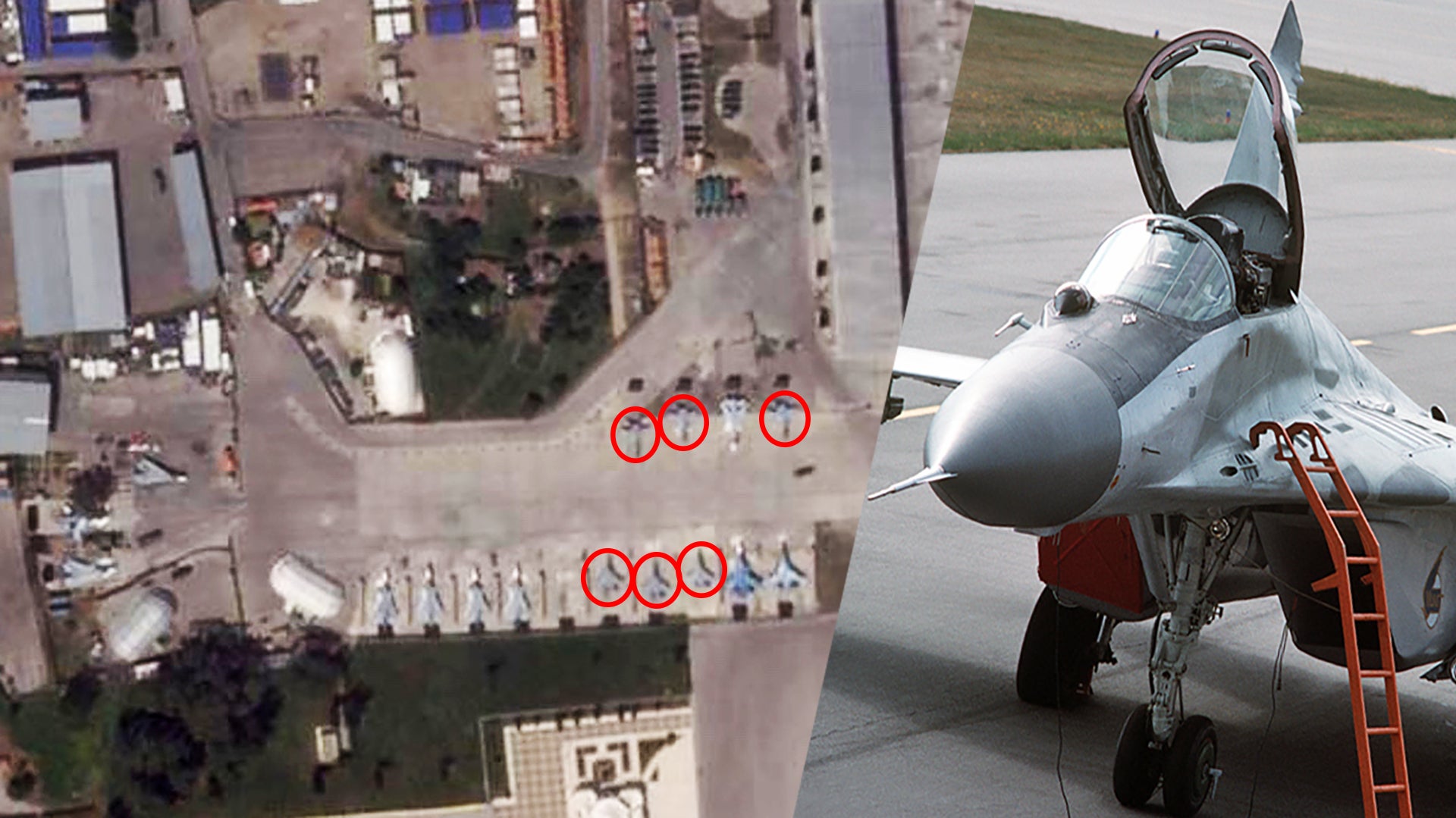In a follow-up to our recent article on the MiG-29 Fulcrum that was spotted in Libya after reports began swirling that half a dozen of the fighters, along with a handful of Su-24 Fencer attack jets, had made their way to Libya, we have new information on multiple fronts. According to satellite imagery obtained by The War Zone, MiG-29s were indeed at Russia’s air base in western Syria just days before the MiG-29 was spotted in Libya. This revelation would seem to fit reports that the fighters had passed through the base on their way to Libya and that Russia has a major hand in their appearance in the war-torn North African country.
For proper context and background, make sure to read our previous piece on this developing and complex issue by clicking here.
The image we obtained, which is posted in part below, of Russia’s Khmeimim Air Base in Syria was taken on May 18th, 2020. It shows six MiG-29s on the base’s central tactical jet apron. In another high-resolution image taken on May 25th that we examined, the aircraft are gone. It is worth noting that the five Su-24 Fencers parked next to the MiG-29s were also gone in the May 25th image.
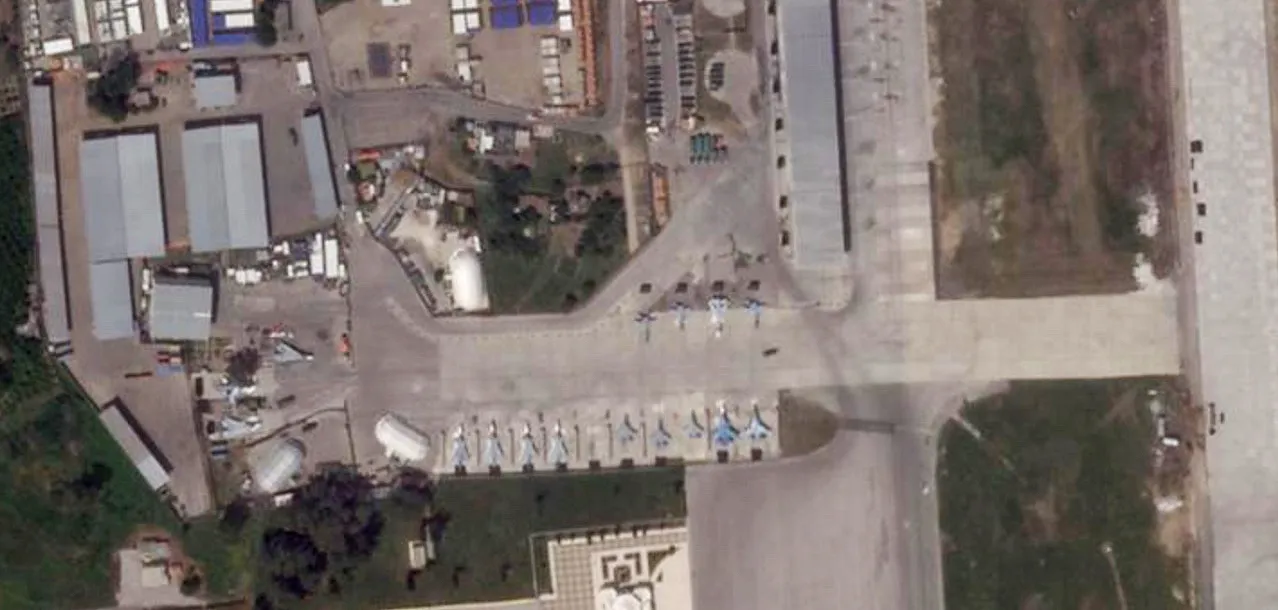
We must keep in mind that Russia now has a string of covered tactical jet aircraft revetments just to the north of this apron and we cannot see what is under their roofs. Still, the fact that there were indeed MiG-29s at the base just a couple of days prior to a MiG-29 mysteriously appearing in Libya is strong evidence that suggests these were the jets, especially because they don’t show up in any satellite images just before or after the May 18th image.
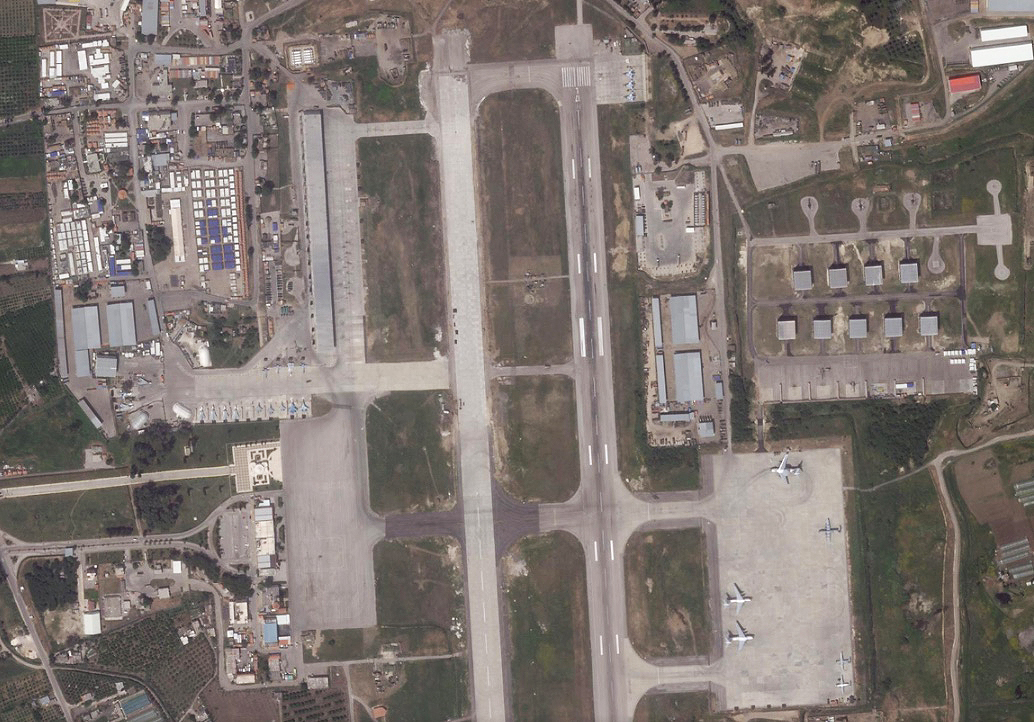
Over the weekend, The War Zone also reviewed recent satellite imagery of every air base in Libya capable of hosting the MiG-29s aside from two that were unlikely candidates in the first place. We also ordered an up-to-date image of Al Jufrah Air Base where the MiG-29 was spotted just days earlier. We saw no sign of any MiG-29s at the base or any other, nor any unusual logistical operations, but that doesn’t mean the jets weren’t there.
They would likely be stored in hardened aircraft shelters, even if the shelters are damaged like so many are in Libya, as Turkey’s drone war on behalf of the sitting government in Tripoli has taken a major toll on strong man Khalifa Haftar’s forces. Fourth-generation fighters deployed by a major power to the country to better support his forces and to quell Turkey’s drone onslaught against them would be a major target for that same drone force.
In other words, a MiG-29 is not something you want to leave out in the open where it would be vulnerable to overhead attack. They are also imminently identifiable as foreign as Libya never flew the type.
Last week, reports emerged that said MiG-29s were in Libya and that the aircraft had arrived alongside heavy transports. In addition, the sitting government in Tripoli’s Foreign Minister claimed that they came from Russia via Syria. Still, these were unverified reports—that is until we saw the satellite image of the MiG-29 at Al Jufrah Air Base. One very odd part about the original claim is that there hadn’t been MiG-29s deployed to Russia’s Syrian air base in well over two years. In fact, the type has largely left front-line Russian Air Force service overall.
Thomas Newdick, Editor of Air Forces Monthly magazine, gave The War Zone an idea of the current state of the MiG-29 in Russian service:
‘Currently, the Russian Aerospace Forces’ MiG-29 fleet is in a fairly parlous state. In fact, the type survives with only one frontline unit, and that’s based outside of Russian territory, at Erebuni in Armenia. Otherwise, the type is limited to service with training and test units – plus the Strizhi display team – and the type has never been subject to a mid-life upgrade. Instead, resources have focused on the Sukhoi Flanker family of heavyweight fighters; first through upgrade and then through new acquisitions.
For a period, Russia operated more capable MiG-29SMT jets, kicked off when a squadron of these jets were rejected by an export customer, Algeria. The advanced SMTs served with the prestigious 14th Fighter Aviation Regiment at Kursk, but were then withdrawn in 2018 – after being deployed for a brief cameo in the Russian campaign in Syria. They were replaced by Su-30SM multirole fighters. Future prospects for the land-based Fulcrum in Russia don’t look great – only six examples of the all-new MiG-35 have been purchased to date, despite official hopes for a significant order. It’s expected these will be delivered before the end of this year – perhaps to the Strizhi display team.”
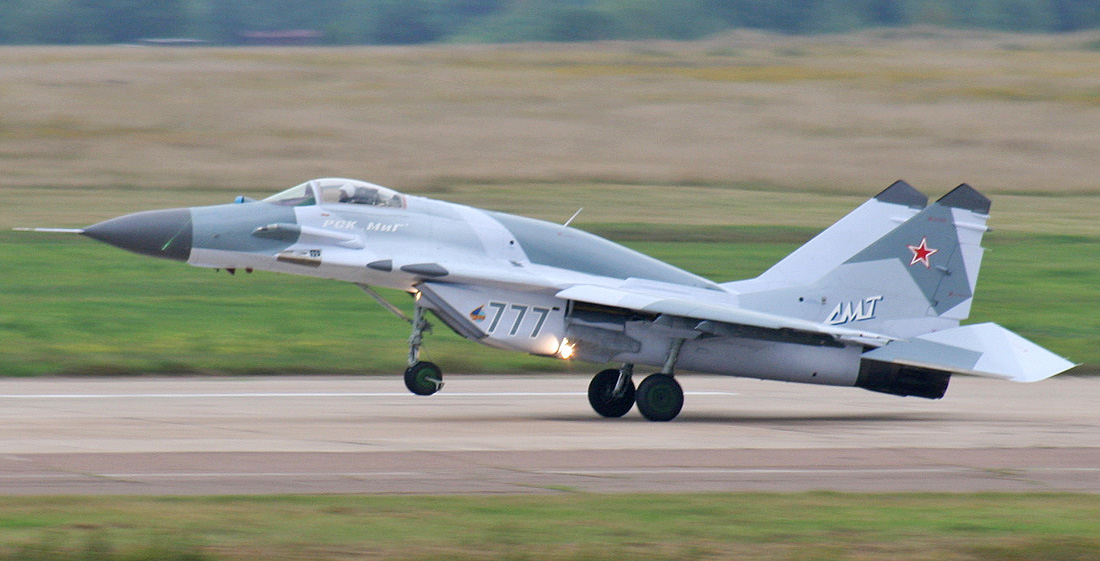
So, if Russia has decided to make the unprecedented move to drastically increase support for Khalifa Haftar’s forces by deploying relatively advanced fighters to Libya, the MiG-29 really isn’t Moscow’s most obvious choice. On the other hand, if the idea is to do this indirectly, via some sort of shadow force—”little green jets” if you will—Russia has plenty of surplus Fulcrums available to send to Libya. If this is the case, or if Russia just decided to formally commit the largely retired type to the cause, the question would be how did they get there?
Outside of the small stable of MiG-29SMTs that Russia has, and its navalized MiG-29KRs and a few MiG-35s in testing, Russia’s Fulcrums don’t have aerial refueling capability. It is nearly 1,300 miles between Russia’s Khmeimim Air Base in Syria and Al Jufrah Air Base in Libya via a straight line. It seems that an actual real-world route would have been on the extreme periphery, if not squarely outside of a Russian Air Force Fulcrum’s organic ferry range—aside from the MiG-29SMT. So, either those jets stopped somewhere for gas along the way or they were somehow able to make that long journey without refueling or an advanced aerial refueling capable type is now deployed to Libya.
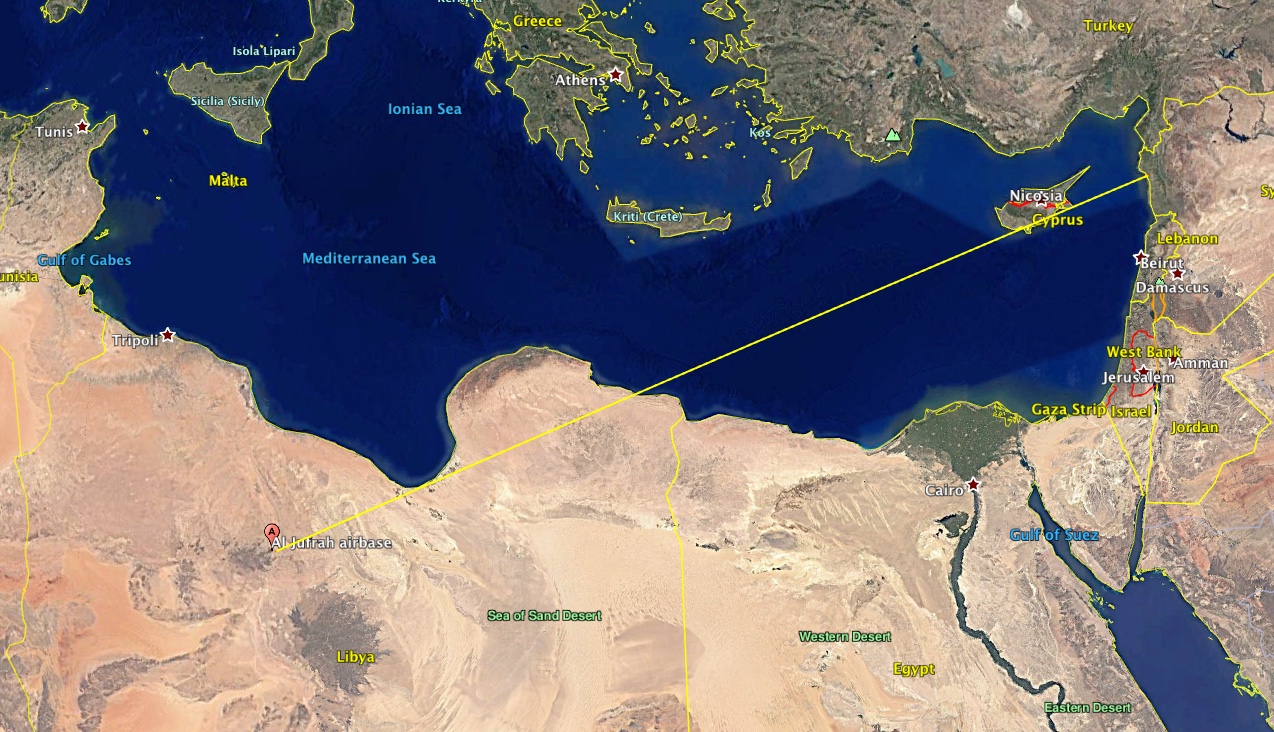
Is it possible that this is some sort of bizarre coincidence and the Fulcrum spotted in Libya belongs to someone else? Yes, but the dates lining up just right and the relatively uncommon type being in the exact place—Russia’s air base in Syria—at just the right time would seem quite unlikely. If that is the case, then what MiG-29s were at the base in Syria last week and why were they there?
It is possible that Syria’s own beat-up Fulcrum fleet may have paid Russia’s base a visit, but that would have been a rare move. Maybe Russia was delivering a fresh batch of surplus MiG-29s to the Syrians, but once again, this would be a very odd coincidence and there are no reports of Moscow doing so. A combat test of one of Russia’s newer MiG-29 derivatives is another possibility, but that also seems like a reach considering the timing of the Libyan mystery. Still, it is possible. Could it be that the aircraft came from another country and stopped in Syria for training before heading to Libya? That is highly doubtful and also unprecedented.
So, yes, it is possible that this is some strange coincidence and maybe the aircraft migrated into Libya from another place regardless of if Russia has a hand in it or not, but this imagery makes that far less plausible than before.
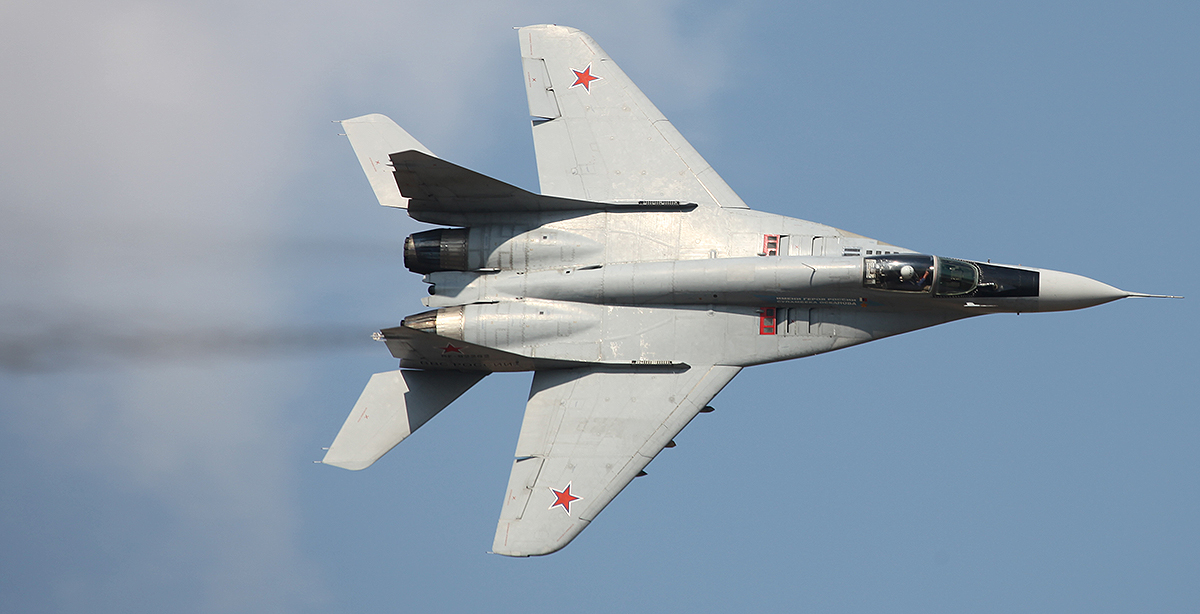
If Russia did indeed send MiGs and presumably aircrews to Libya to help realize Haftar’s stalled dream of gaining a hold over all of his country, it would be a huge escalation on their part. Yet we have seen this before. When things got dicey for another strongman who is friendly with Moscow and whose country is strategically placed in an area of great interest to Russia, the Kremlin stepped in with its airpower to help turn the tide. It has been brutally effective in Syria, so why not Libya?
Meanwhile, it seems that a quartet of Su-24s may have been identified in Libya, as well, and they are also likely of Russian origin. This time they are located in the northeastern portion of the country at Al Khadim Air Base, a key forward-deployed airpower location for foreign powers that are actively backing Haftar. In the past, this has been limited to lower-end close air support and reconnaissance aircraft, so the potential arrival of Russian Su-24s is a huge deal. Also, positioning the Su-24s to the east makes sense as they have a substantially greater combat radius than the MiG-29 and can reach out into the western part of the country with relative ease.
Note, the temporary hangars seen in the image above are 80 feet deep. The Su-24 is 74 feet long. Libyan MiG-23s are still being used in the civil war. Those aircraft are 55 feet long. It is fairly likely given those dimensions that we are indeed seeing Su-24s here. The grey paint scheme matches the one used by the Russian Air Force.

If indeed Russia in flowing high-performance tactical airpower into Libya, as all this evidence appears to suggest, it would signify a huge leap in the internationalization of the Libyan conflict and the potential for it to become far more volatile. Russia’s powerplay would also make sense as Haftar’s forces have stated that they are going to launch an unprecedented air war against the Government of National Accord’s forces. When this was originally proclaimed, it seemed puzzling. How could they do this with their existing airpower resources? The addition of MiG-29s and Su-24s from Russia would definitely answer that question. It also raises two key new questions, as well:
If Russia has deployed these aircraft to Libya, what other military hardware will arrive next and what will the backers of Haftar’s enemy, namely Turkey, do in response?
UPDATE:
Just hours after we published this report, U.S. Africa Command has confirmed that Russian tactical aircraft have been deployed to Libya. Here is their official release:
U.S. Africa Command assesses that Moscow recently deployed military fighter aircraft to Libya in order to support Russian state-sponsored private military contractors (PMCs) operating on the ground there.
Russian military aircraft are likely to provide close air support and offensive fires for the Wagner Group PMC that is supporting the Libyan National Army’s (LNA) fight against the internationally recognized Government of National Accord. The Russian fighter aircraft arrived in Libya, from an airbase in Russia, after transiting Syria where it is assessed they were repainted to camouflage their Russian origin.
“Russia is clearly trying to tip the scales in its favor in Libya. Just like I saw them doing in Syria, they are expanding their military footprint in Africa using government-supported mercenary groups like Wagner,” said U.S. Army Gen. Stephen Townsend, commander, U.S. Africa Command. “For too long, Russia has denied the full extent of its involvement in the ongoing Libyan conflict. Well, there is no denying it now. We watched as Russia flew fourth generation jet fighters to Libya — every step of the way. Neither the LNA nor private military companies can arm, operate and sustain these fighters without state support — support they are getting from Russia.”
Russia has employed state-sponsored Wagner in Libya to conceal its direct role and to afford Moscow plausible deniability of its malign actions. U.S. Africa Command assesses Moscow’s military actions have prolonged the Libyan conflict and exacerbated casualties and human suffering on both sides.
“The world heard Mr. Haftar declare he was about to unleash a new air campaign. That will be Russian mercenary pilots flying Russian-supplied aircraft to bomb Libyans,” Townsend said.
U.S. Africa Command assesses that Russia is not interested in what is best for the Libyan people but are working to achieve their own strategic goals instead.
“If Russia seizes basing on Libya’s coast, the next logical step is they deploy permanent long-range anti-access area denial (A2AD) capabilities,” said U.S. Air Force Gen. Jeff Harrigian, commander, U.S. Air Forces in Europe-Air Forces Africa. “If that day comes, it will create very real security concerns on Europe’s southern flank.”
Russia’s destabilizing actions in Libya will also exacerbate the regional instability that has driven the migration crisis affecting Europe.
According to their assessment, Russia is going the ‘little green planes’ route as I coined earlier, repainting the aircraft and having semi-‘sheep-dipped’ pilots fly them. This is a huge deal and the strategic implications, as I noted in my closing paragraph in regards to the question of what weaponry will descend on Libya next, are absolutely huge. Also, if Russia really tries to make this a Wagner-like affair, this will also be a huge escalation in the level of weaponry Russia’s state-sponsored mercenary group is equipped with.
Apparently, the U.S. military had reconnaissance aircraft off the Syrian coast peering at Russia’s base as the planes took off for Libya. U-2s and P-8s are usual visitors to this area and both types have flown missions in recent days there. The images of the departure were likely taken by a U-2. It appears that a P-8 also got video of one of the Fulcrums in the air at some point. The other image may have come from a drone, such as an MQ-9 Reaper, or a fighter’s targeting pod.
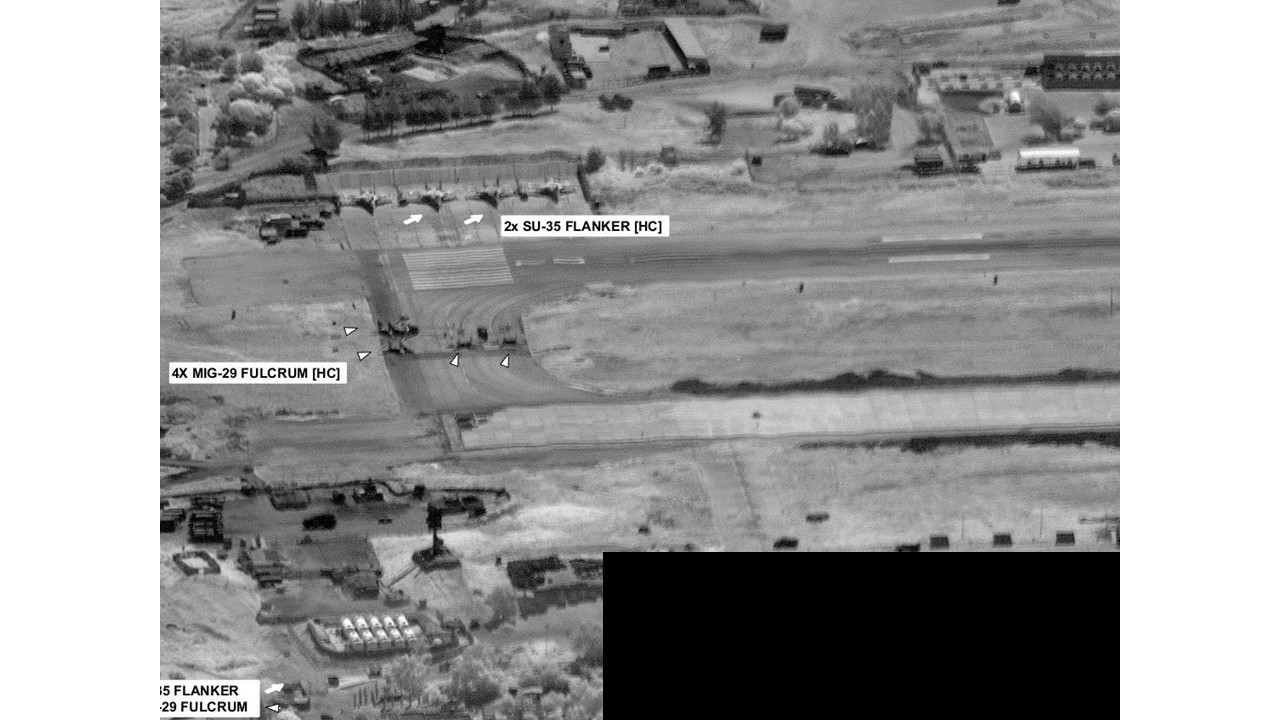
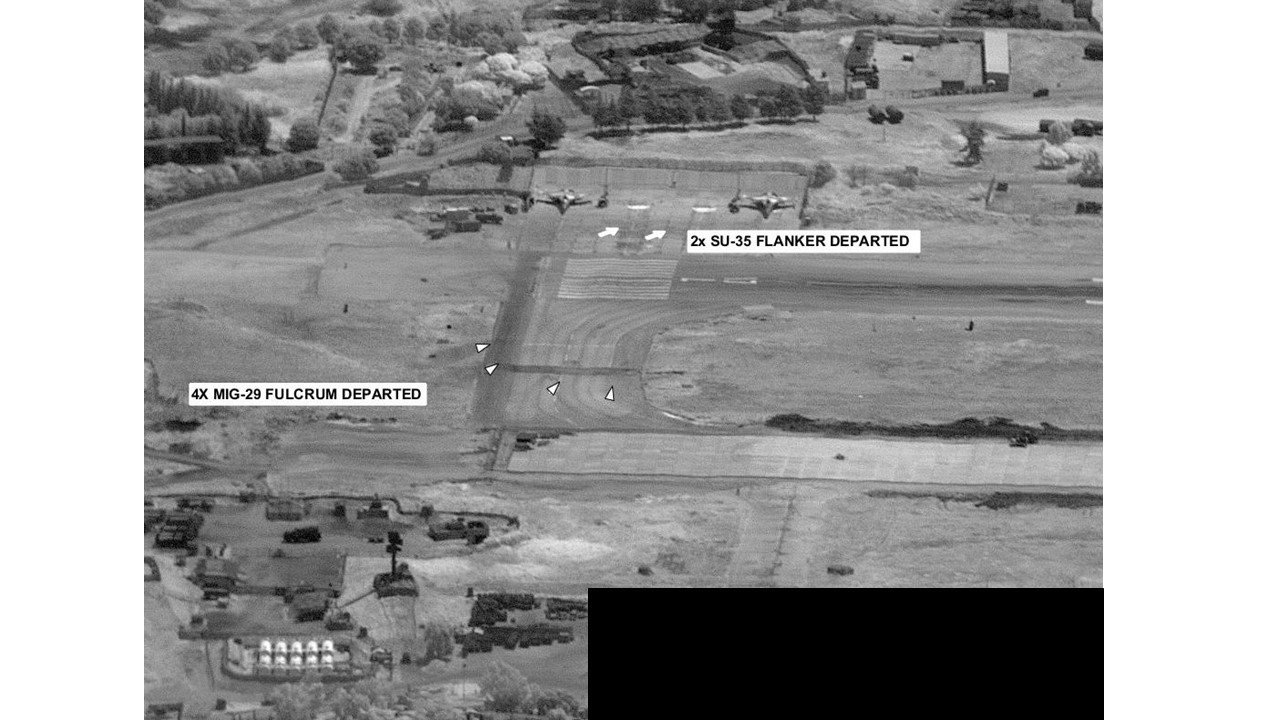
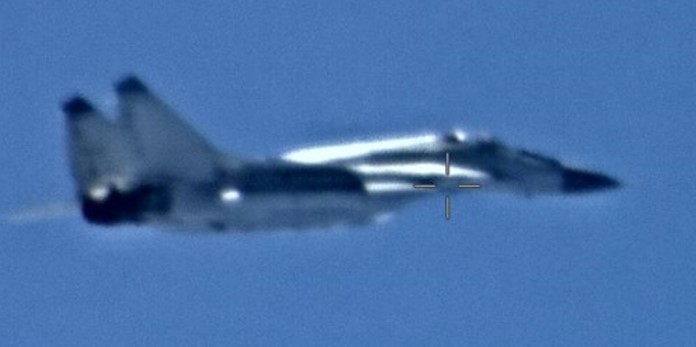

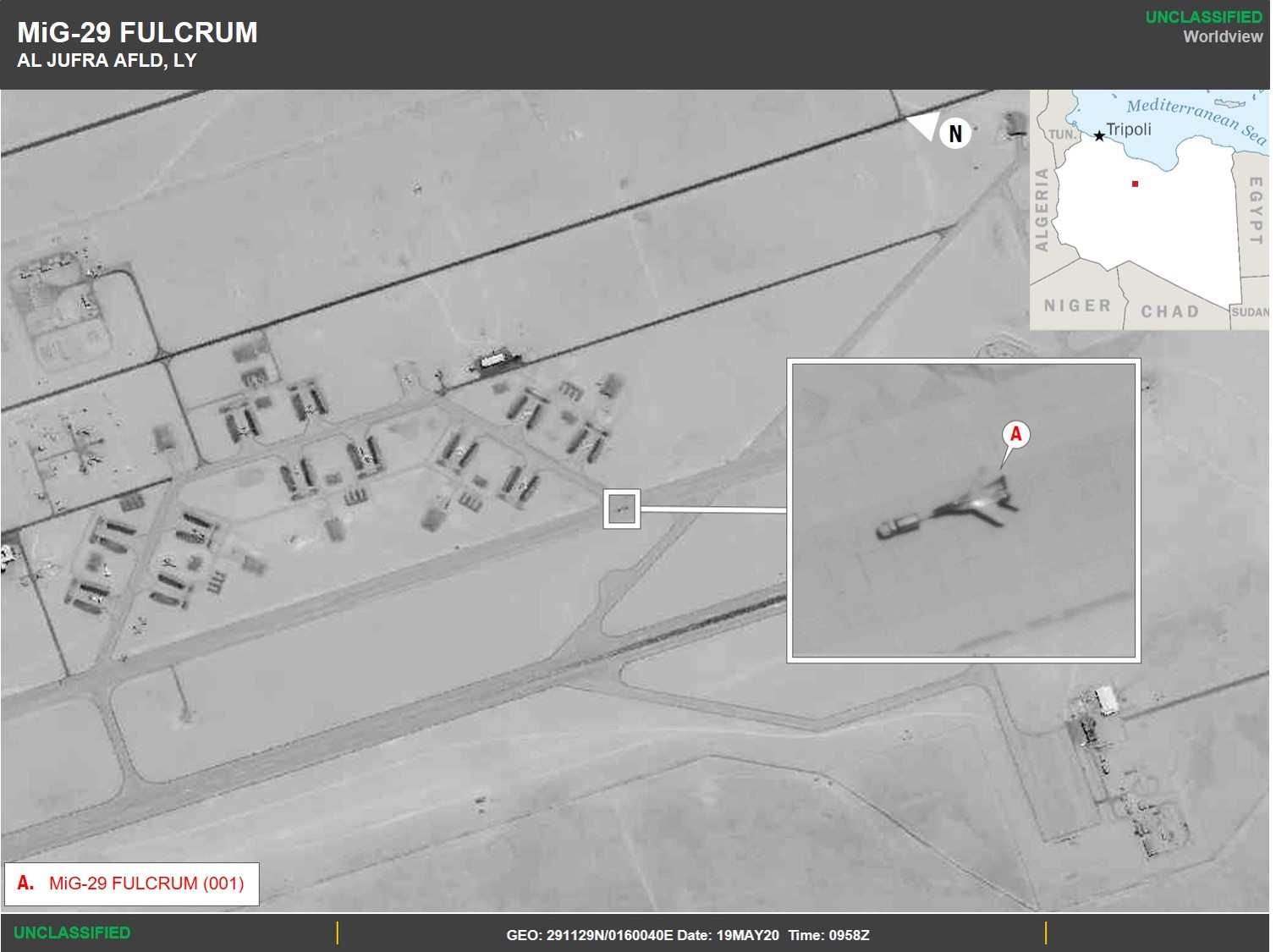
Contact the author: Tyler@thedrive.com
